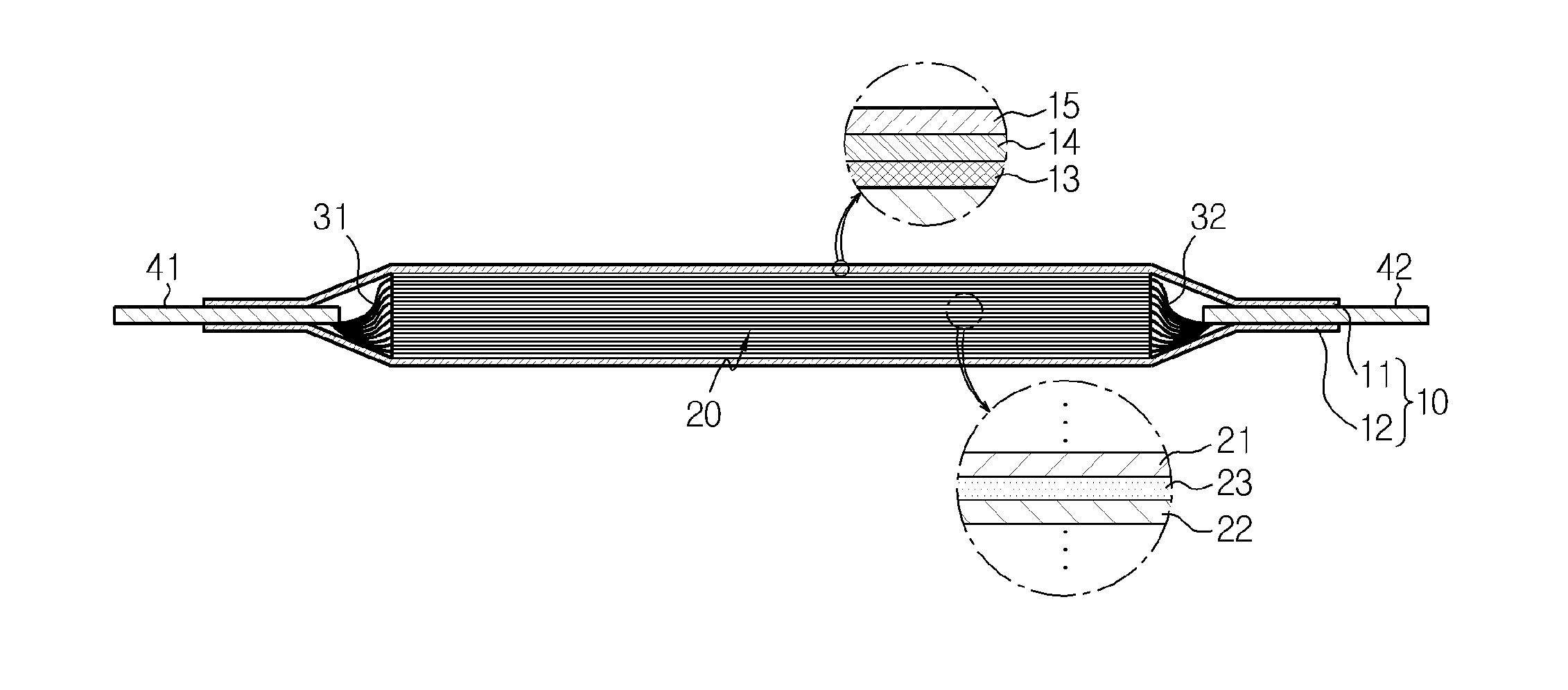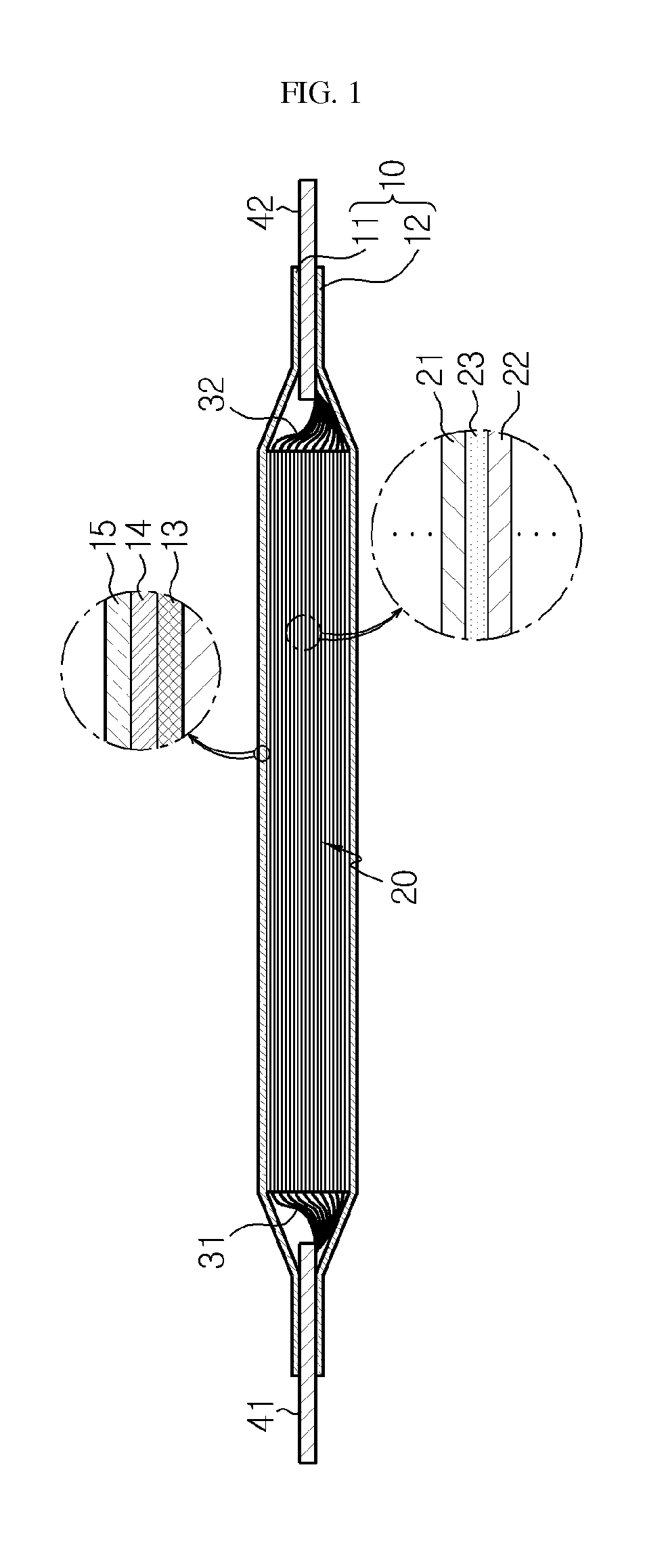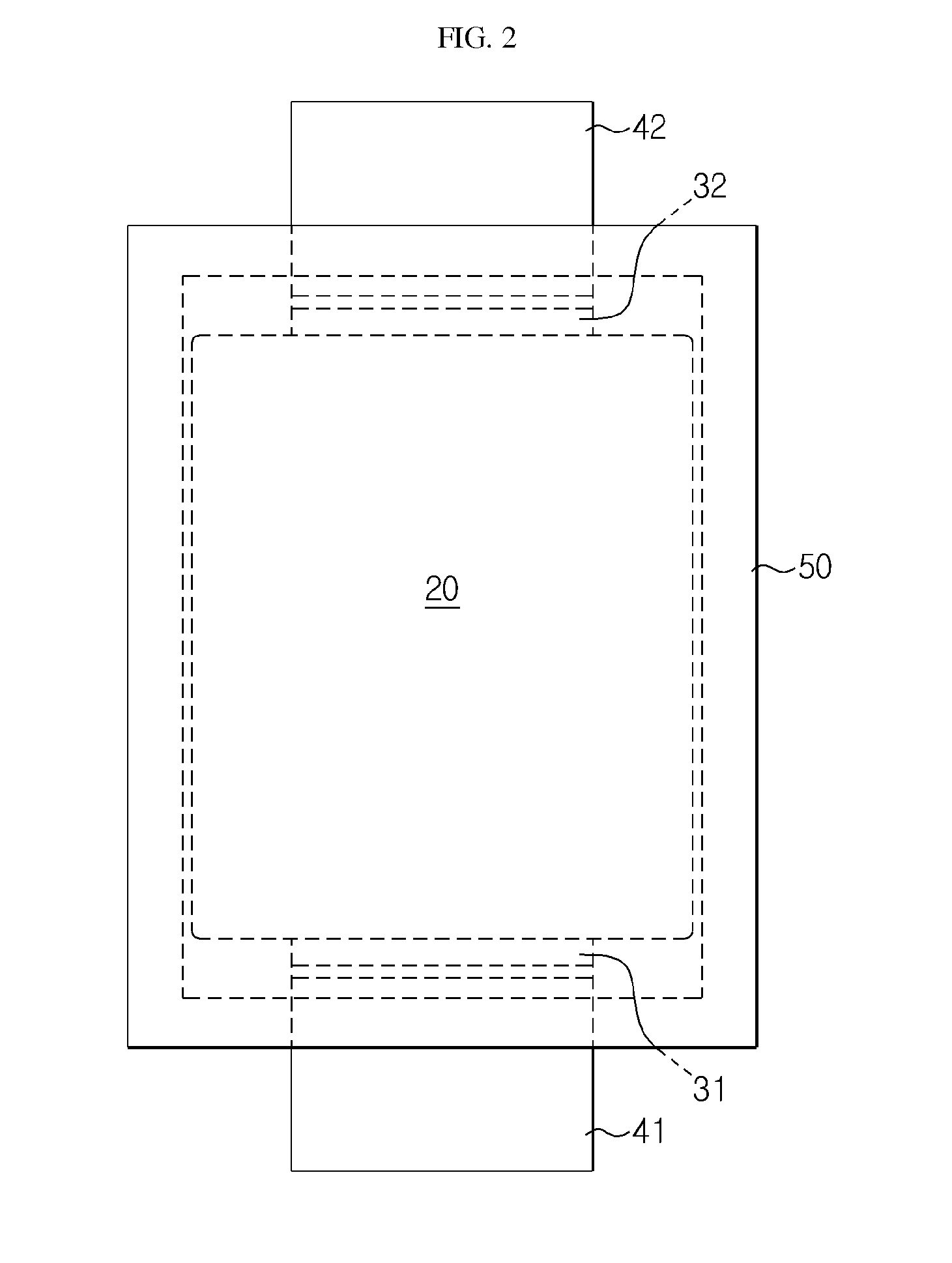Secondary battery having improved reliability for humidity penetration
a technology of secondary batteries and reliability, applied in the field of secondary batteries, can solve the problems of difficult volume reduction, weak thermal bonding portion of the pouch package b>10/b>, and the design of electric products, and achieve the effect of suppressing the decrease of the capacity of the secondary battery and improving the long-term reliability of the secondary battery
- Summary
- Abstract
- Description
- Claims
- Application Information
AI Technical Summary
Benefits of technology
Problems solved by technology
Method used
Image
Examples
example 1
[0078]A pouch-type secondary battery having a discharge capacity of 5 Ah and a cell area of 30,000 mm2 (120 mm×250 mm) was prepared. A basic structure of the pouch-type secondary battery is the same as shown in FIG. 3.
[0079]The pouch package used for making the secondary battery includes a substrate layer and a thermal bonding layer, respectively made of aluminum and modified polypropylene. The characteristic length of the sealing portion formed at the periphery of the pouch package during a sealing process was calculated to be 19. Under a temperature of 25° C. and a relative humidity of 80%, the content of humidity penetrating into the secondary battery for a day was measured to be 0.4566 ppm / day. Further, based on the humidity penetration content for a day, the total humidity penetration content for 15 years was estimated in a proportional relation. As a result of estimation, the humidity penetration content for 15 years was calculated to be 2,500 ppm. Based on the calculation res...
example 2
[0080]A pouch-type secondary battery was prepared under the same condition as Example 1, except that the sealing width of the sealing portion was adjusted during the sealing process of the secondary battery so that the characteristic length of the sealing portion is 18.
[0081]For the secondary battery of Example 2, under a temperature of 25° C. and a relative humidity of 80%, the content of humidity penetrating into the secondary battery for a day was measured to be 0.4292 ppm / day. Based on the humidity penetration content for a day, the total humidity penetration content for 15 years was estimated in a proportional relation and calculated to be 2,350 ppm. In addition, by using the look-up table, the increase of resistance of the secondary battery corresponding to the case where the humidity penetration content is 2,350 ppm was estimated to be 7.40%.
example 3
[0082]A pouch-type secondary battery was prepared under the same condition as Example 1, except that the sealing width of the sealing portion was adjusted during the sealing process of the secondary battery so that the characteristic length of the sealing portion is 15.
[0083]For the secondary battery of Example 3, under a temperature of 25° C. and a relative humidity of 80%, the content of humidity penetrating into the secondary battery for a day was measured to be 0.3561 ppm / day. Based on the humidity penetration content for a day, the total humidity penetration content for 15 years was estimated in a proportional relation and calculated to be 1,950 ppm. In addition, by using the look-up table, the increase of resistance of the secondary battery corresponding to the case where the humidity penetration content is 1,950 ppm was estimated to be 6.1%.
PUM
| Property | Measurement | Unit |
|---|---|---|
| length | aaaaa | aaaaa |
| temperature | aaaaa | aaaaa |
| operating voltage | aaaaa | aaaaa |
Abstract
Description
Claims
Application Information
 Login to View More
Login to View More - R&D
- Intellectual Property
- Life Sciences
- Materials
- Tech Scout
- Unparalleled Data Quality
- Higher Quality Content
- 60% Fewer Hallucinations
Browse by: Latest US Patents, China's latest patents, Technical Efficacy Thesaurus, Application Domain, Technology Topic, Popular Technical Reports.
© 2025 PatSnap. All rights reserved.Legal|Privacy policy|Modern Slavery Act Transparency Statement|Sitemap|About US| Contact US: help@patsnap.com



